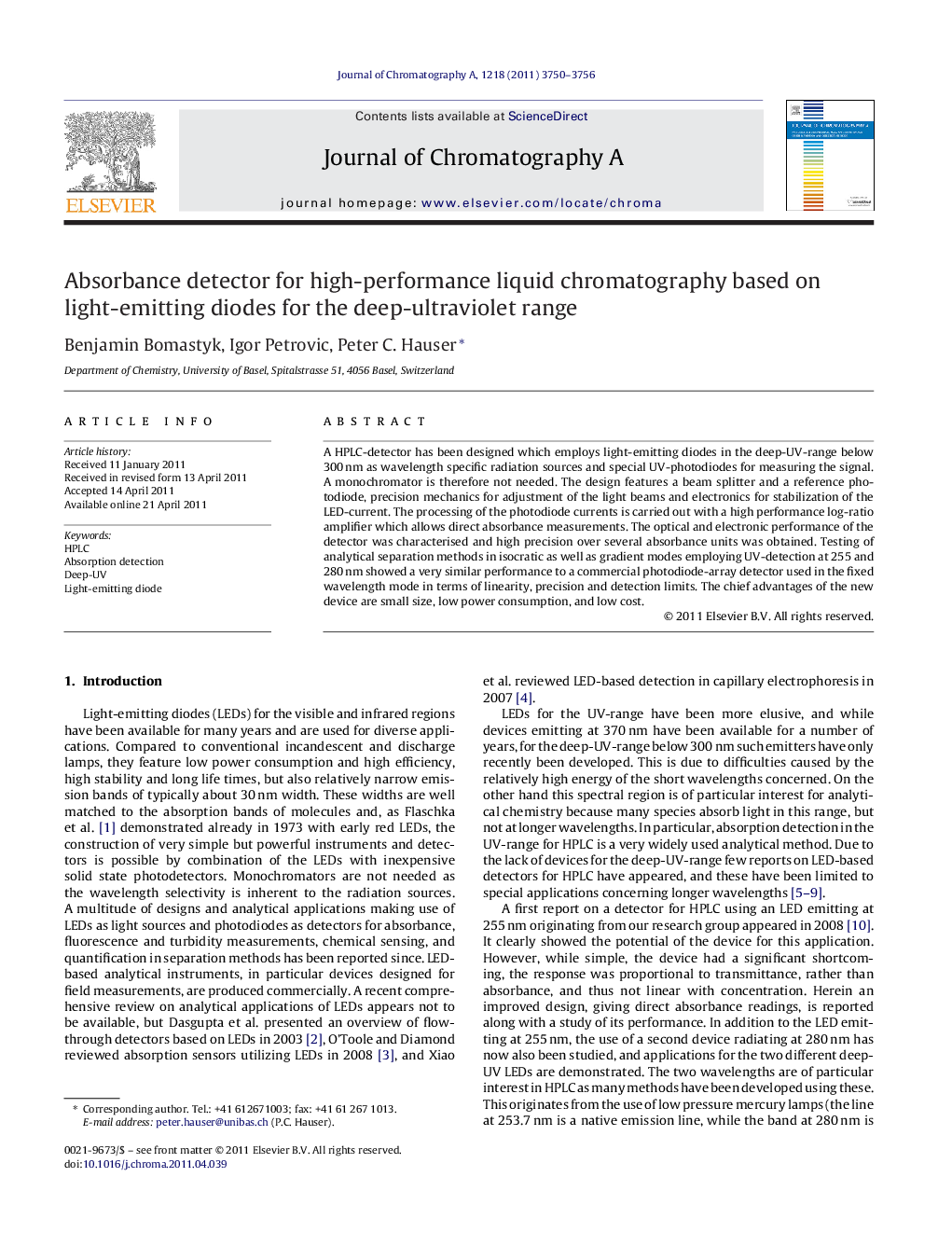| Article ID | Journal | Published Year | Pages | File Type |
|---|---|---|---|---|
| 1202072 | Journal of Chromatography A | 2011 | 7 Pages |
A HPLC-detector has been designed which employs light-emitting diodes in the deep-UV-range below 300 nm as wavelength specific radiation sources and special UV-photodiodes for measuring the signal. A monochromator is therefore not needed. The design features a beam splitter and a reference photodiode, precision mechanics for adjustment of the light beams and electronics for stabilization of the LED-current. The processing of the photodiode currents is carried out with a high performance log-ratio amplifier which allows direct absorbance measurements. The optical and electronic performance of the detector was characterised and high precision over several absorbance units was obtained. Testing of analytical separation methods in isocratic as well as gradient modes employing UV-detection at 255 and 280 nm showed a very similar performance to a commercial photodiode-array detector used in the fixed wavelength mode in terms of linearity, precision and detection limits. The chief advantages of the new device are small size, low power consumption, and low cost.
